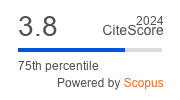Article | Open Access
Subaltern Politics at Urban Borderlands
| Views: | 2074 | | | Downloads: | 1333 |
Abstract: Cities around the world are developed through modern/colonial boundaries between the formal/informal, private/public, vehicular/pedestrian, secular/religious, human/nonhuman, or new/old. Postcolonial and decolonial theorists have demonstrated how borders have served the colonial control of the city through the state apparatus, where differences have reinforced inequalities rather than engendering an open city. While politics between the two sides of the border is often explored, this article draws attention to the rather underacknowledged role of material assemblages at urban borderlands in making room for subaltern agencies to come into being. To do so, I first demonstrate the bordering effects of modern planning practices through an example of real-estate advertisements. Later, I focus on four urban borderlands, namely walls, mandals (socio-religious organisations), hillslopes and rivulet banks, and alleyways. Through ethnographic research on two slum rehabilitation projects in Pune, India, I show that the spatiality and temporality produced by these borderlands transcend modern boundaries while making room for subaltern agencies. Walls are used for bending the fixed spatiality of modern apartment buildings; mandals engender a spatiotemporal structure that straddles the religious/secular boundary; hillslopes and rivulet banks support the permanent temporariness of the self-built neighbourhoods; and alleyways allow the public and the private to flow into one another. Here, subaltern agencies effectively transgress modern borders, not by rejecting them but by inhabiting them to make an alternative and open city possible. In effect, this article argues that urban borderlands make visible subaltern agencies that have the potential to dislodge urban theory and practice from their colonial modernist legacy.
Keywords: India; modern boundaries; modern planning; postcolonial urbanism; Pune; subaltern agencies; urban borderlands
Published:
Online discussion: Watch the conversation about this article on Let's Talk About
© Harshavardhan Jatkar. This is an open access article distributed under the terms of the Creative Commons Attribution 4.0 license (http://creativecommons.org/licenses/by/4.0), which permits any use, distribution, and reproduction of the work without further permission provided the original author(s) and source are credited.


